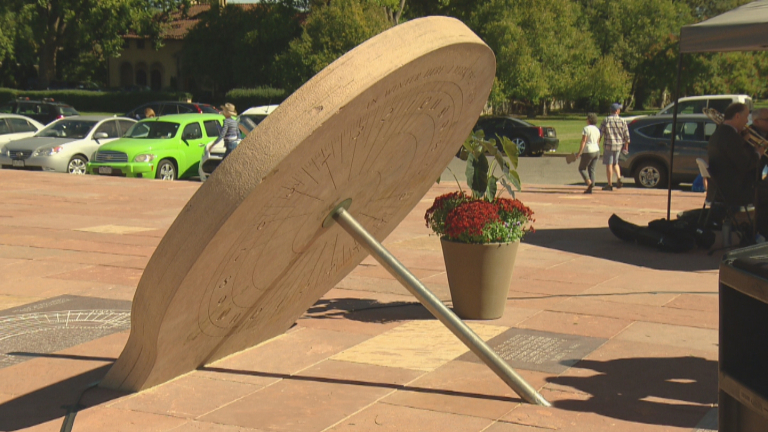
|
2. Telling time - Sundials |
 |
| Credit: CBS Denver |
Here is this activity as published on the Astronomical League observing program page:
"2. Telling time - Sundials: Sundials are classified into a number of
different types, mainly by the plane in which the dial lays…horizontal,
vertical, equatorial, polar, etc. Some types are more challenging to make
particularly those designed to be used at odd angles.
It is easy to go to the Internet and order a garden type sundial. If you do and
set it up, you’ll find that it doesn’t perform very well versus the clock on
your kitchen wall. Sundials could tell time so accurately that they were used
into the twentieth century.
Make at least three kinds of sundials, one of which is pocket sized. You are encouraged to do the actual geometric construction of the dial rather than printing one that is already laid out. The sundials should be designed for your particular latitude and use corrections needed to tell accurate time by applying longitude, equation of time, and daylight savings time corrections. Test your sundials using your north marks and apply the needed corrections. Compare your results to a watch.
Construction of mechanical clocks is beyond the means of most of us, but they were in use during the later parts of the period this program covers. One such surviving clock is in Prague, Czech Republic. The clock was started in 1410 and should be viewed, if not in person at least via the Internet here: http://www.wijzerweb.be/prague.html. The information it provides beyond time is astounding."
The sundial pictured above is in a park in Denver Colorado, a few miles from my home. I've visited the sundial at Cranmer Park many times over the past four decades. The sundial has a bumpy history including being dynamited by vandals and two restorations.
Here's my first attempt at sundial number one. Like the Cranmer, it is an equatorial style. The plate is aligned parallel to the equator and the gnomon points at Polaris, the North Star. To be more precise, it points at the celestial north pole, which is pretty close to Polaris.
In the Summer half of the year you read the top of the dial. In the Winter months you read the bottom scale. On the two equinoxes everybody takes the day off because nobody can tell what time it is.
I found the design at a nice sundial website called My Sundial. A fun one evening project. Just print out the .pdf, paste it to foam board, cut it out, glue it together and find a suitable gnomon. You do have to create a base for the dial plate and make sure it is mounted on an angle equal to your latitude.
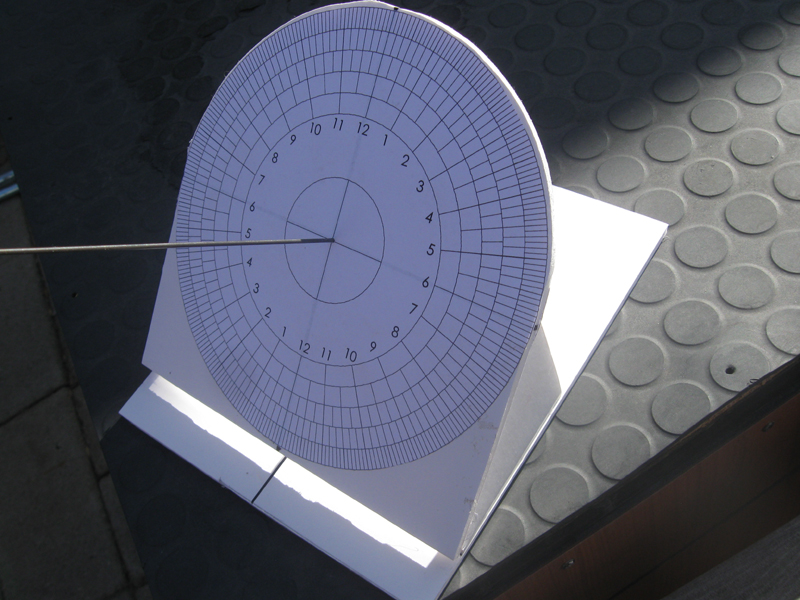
The top dial is in the shade now because it's the end of December.
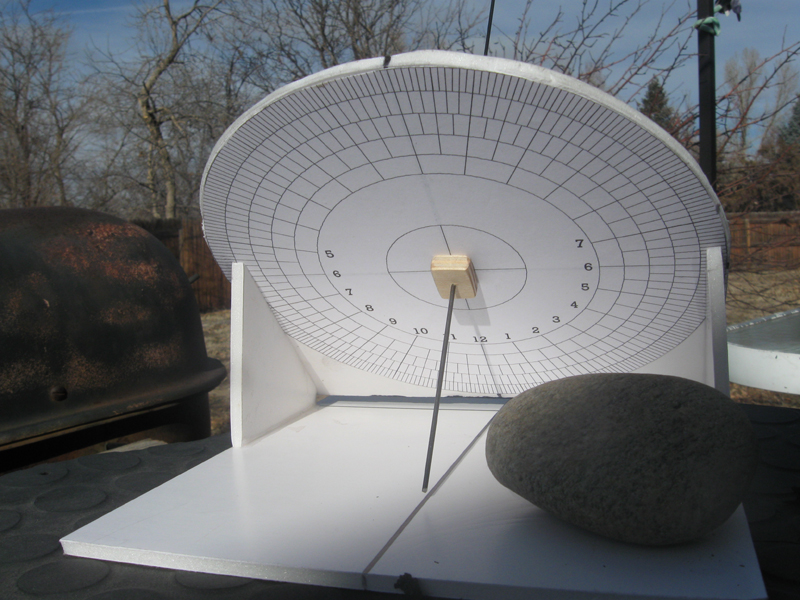
And here's the bottom dial for the Wintertime. First light for this dial at noon Friday Decemeber 28 2017. I set the dial by my watch. The rock is to keep the whole affair from blowing away.
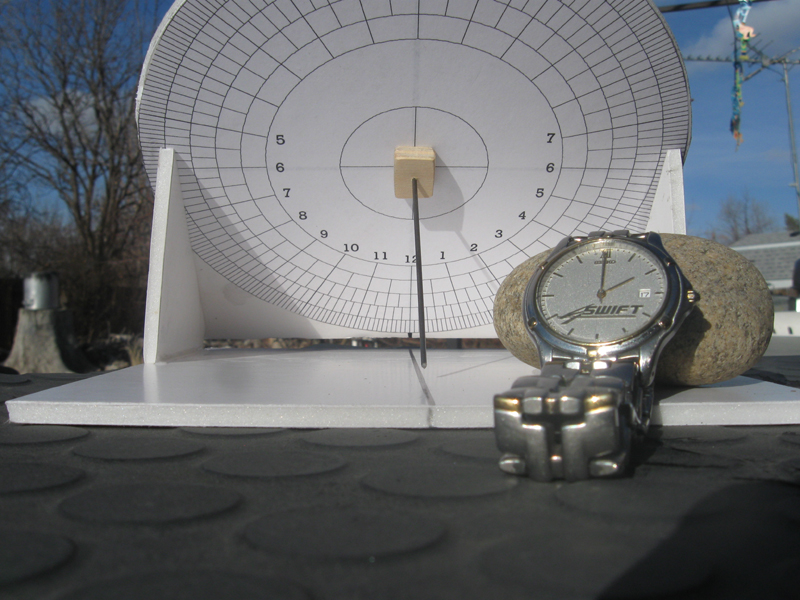
Two hours later, the sundial seems to be running about five minutes slow.
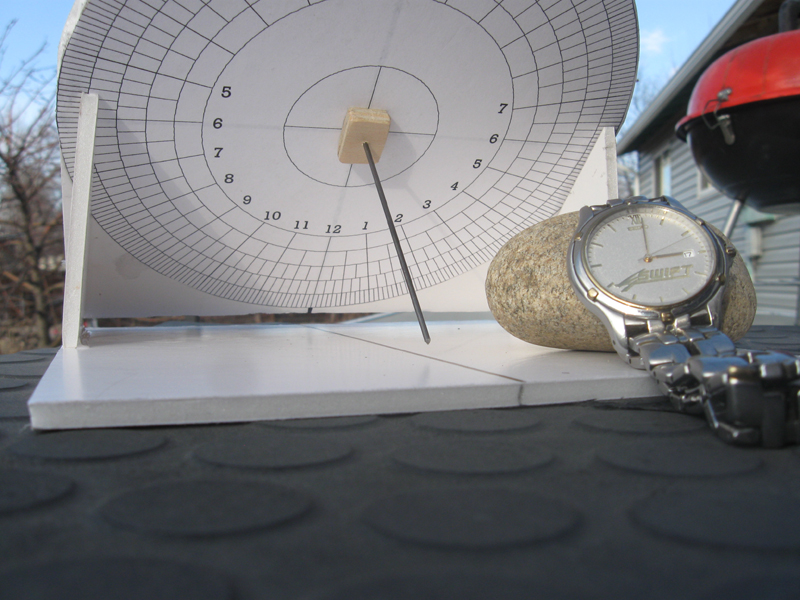
Three o'clock still a little slow.
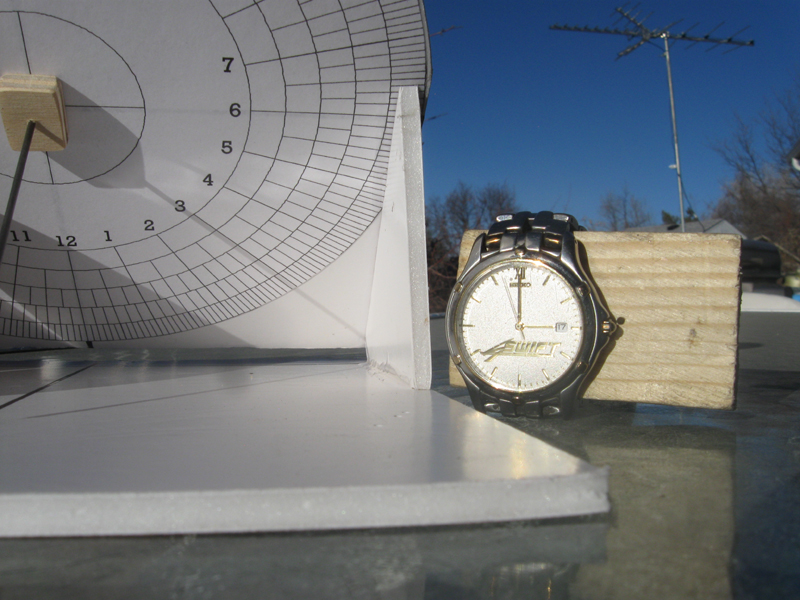
Here we are the next day. This time I made sure the sundial was sitting on a level surface. At 3 PM the sundial is only slow by about 2 minutes. The smallest divisions on the dial are 2-1/2 minutes.
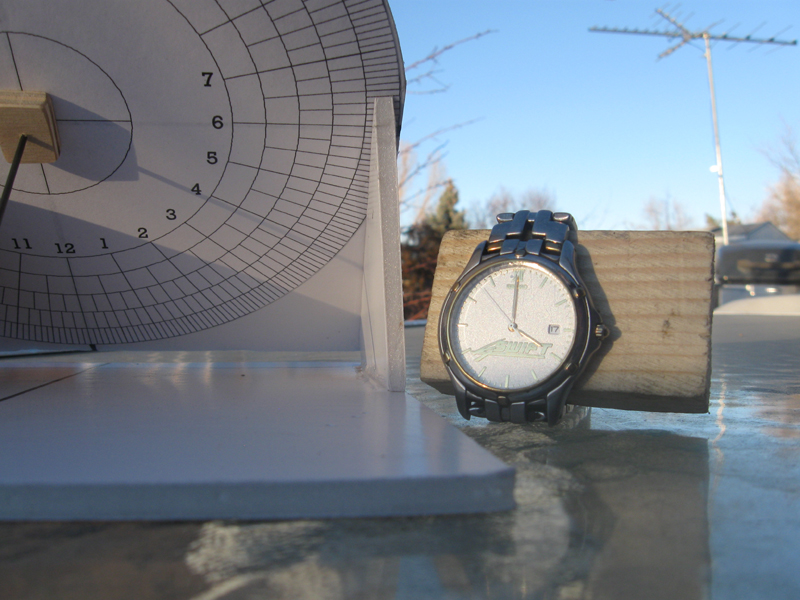
4 PM it looks to be about three minutes slow. I suspect that the gnomon might not be perfectly aligned perpendicular to the dial plate.
Comments added May 27, 2019
Some of my problems here may be the result of my failure to incorporate the equation of time. I rushed right into this project before I considered this. I will incorporate this factor into future sundial constructions and readings.
-- Astronomy Before the
Telescope page --
-- Binocrane Home --